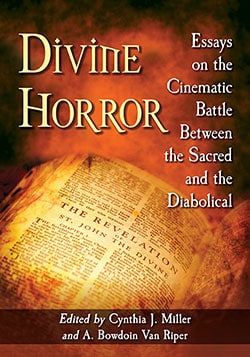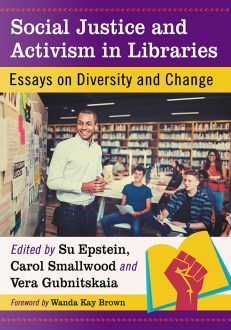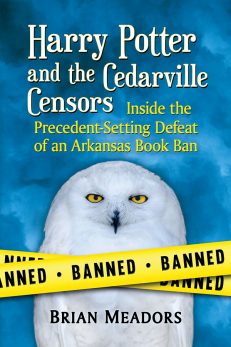Divine Horror
Essays on the Cinematic Battle Between the Sacred and the Diabolical
Original price was: $39.95.$14.99Current price is: $14.99.
In stock
About the Book
From Rosemary’s Baby (1968) to The Witch (2015), horror films use religious entities to both inspire and combat fear and to call into question or affirm the moral order. Churches provide sanctuary, clergy cast out evil, religious icons become weapons, holy ground becomes battleground—but all of these may be turned from their original purpose.
This collection of new essays explores fifty years of genre horror in which manifestations of the sacred or profane play a material role. The contributors explore portrayals of the war between good and evil and their archetypes in such classics as The Omen (1976), The Exorcist (1973) and Dracula Has Risen from the Grave (1968), as well as in popular franchises like Hellraiser and Hellboy and cult films such as God Told Me To (1976), Thirst (2009) and Frailty (2001).
About the Author(s)
Bibliographic Details
Edited by Cynthia J. Miller and A. Bowdoin Van Riper
Format: softcover (7 x 10)
Pages: 256
Bibliographic Info: 35 photos, notes, bibliographies, index
Copyright Date: 2017
pISBN: 978-1-4766-6992-2
eISBN: 978-1-4766-2984-1
Imprint: McFarland
Table of Contents
Table of Contents
Acknowledgments vi
Introduction 1
Part I. The Past, Bleeding into the Present
“What went we out into this wilderness to find”: Supernatural Contest in Robert Eggers’s The Witch: A New-England Folktale (2015)
(Thomas Prasch) 11
Emily Rose Died for Your Sins: Paranormal Piety, Medieval Theology
and Ambiguous Cinematic Soteriology (Kevin J. Wetmore, Jr.) 29
“Is this my reward for defending God’s church?” Monstrous Crimes
and Monstrous Punishments in Witchfinder General (1968),
The Devils (1971) and The Name of the Rose (1986) (James J. Ward) 40
Reckoning the Number of the Beast: Premillennial Dispensationalism,
The Omen and 1970s America (Brad L. Duren) 53
The Fall of a Domestic Angel: Horror and Hierophany in Rosemary’s Baby (1968) (Sue Matheson) 64
“I have seen things that would make the angels weep. And they do weep”: The Devil and Scotland’s Religious Horrors in Let Us Prey
(Eleanor Beal) 76
Part II. The Boundaries of Good and Evil
God’s Bloody Hand: The Horrible Ambiguity of Religious Murder
in Bill Paxton’s Frailty (Mark Henderson) 89
No Religion or Too Many: Problematizing God Told Me To (Fernando Gabriel Pagnoni Berns) 101
Demons to Some, Angels to Others: Eldritch Horrors and Hellbound
Religion in the Hellraiser Films (Lu´cio Reis-Filho) 113
Redeeming the Demon-Child and the Eco-Horror Fairy Tale: Ambivalent Theosis and Ambiguous Eucatastrophe in Guillermo del Toro’s Hellboy Films (Daniel Otto Jack Petersen) 125
Binary Opposition, Subversion and Liminality in Francis Lawrence’s Constantine (Catherine Becker) 140
Monsters of God: Negotiating the Sacred in Stake Land (Rhonda R. Dass) 150
Part III. Horrors of Knowledge and Faith
“They’re not in charge here”: The Collision of Religion and Science in [Rec] and Quarantine (Bart Bishop) 163
Prince of Darkness: The Metaphysics and Quantum Physics of Evil (Matthew A. Killmeier) 174
The Folly of Faithlessness in Dracula Has Risen from the Grave (Martin F. Norden) 186
Unquenchable Thirst: Morality, Theology and Vampires in Chan-wook Park’s Horror Romance (Michael C. Reiff) 200
Of Heresy and Horror: Stigmata (Cynthia J. Miller) 213
The Power of Film Compels You! Transgressing Taboos and the War on Demonic Possession in The Exorcist (Steve Webley) 225
About the Contributors 239
Index 241
Book Reviews & Awards
“An overall detailed analysis of the genre of divine horror… Highly informative… Divine Horror explores the many dynamics and dimensions of divine horror in modern day cinema and will be of interest to both upper-level high school as well as college-level students.”—Journal of American Culture






